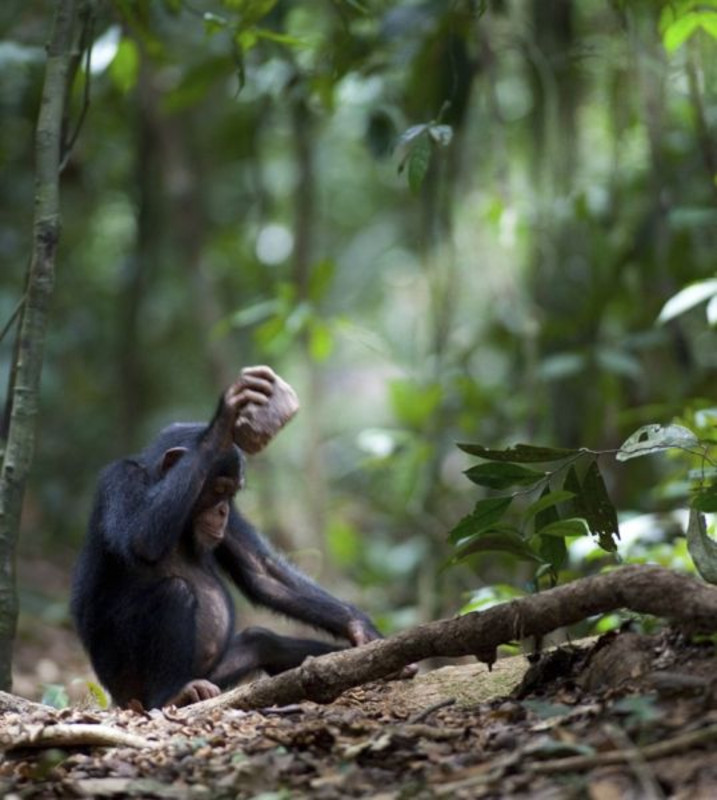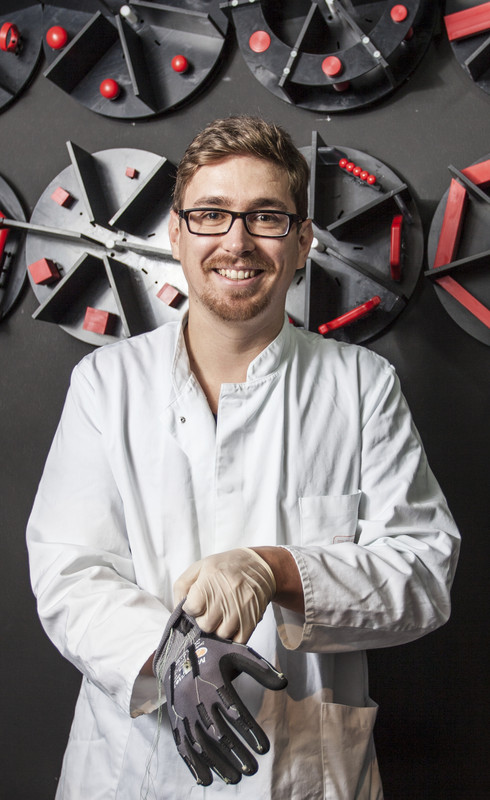Ethologist and Neurobiologist win the German Primate Center Award

The German Primate Center Award is annually given to outstanding young scientists who do research about and with non-human primates. The prize is a six-month scholarship at a research institute of the recipient’s choice and a grant of 1.000 Euro. This year, the award will be split. Lydia Luncz of the Max Planck Institute for Evolutionary Anthropology in Leipzig and Stefan Schaffelhofer of the DPZ in Göttingen will each receive a three-month scholarship to carry out a primate-related research project. The award ceremony including presentations of the prize winners will take place on January 7, 2015 at 6:15 p.m. in the auditorium of the German Primate Center, Kellnerweg 4 in Göttingen. The presentations will be held in English. Visitors are welcome to attend the event.
Not only humans but also chimpanzees have a culture where they can pass on their socially acquired knowledge. Within the framework of her PhD thesis, Lydia Luncz, a scientist at the Max Planck Institute for Evolutionary Anthropology in Leipzig, intended to find out exactly how this happens. Her research was based on the cultural skills of three neighboring chimpanzee groups in the Taï National Parc at the Ivory Coast.
Although the groups live under similar ecological conditions, the surprising thing was that there existed big differences within the learning behavior. This implies an independent development of the ape’s behavior from their habitat conditions. Moreover, individual females regularly migrate to neighboring groups and could thus introduce their cultural knowledge to the new group. But this is not the case. The females adapt very quickly to the cultural standards of the new group and adopt their attitudes. Thanks to the research of Lydia Luncz further research on the causes and mechanisms of the conservative passing of cultural knowledge that leads to a stable and long-lasting diversity between neighboring chimpanzee groups is now possible.
Taking a glass of water from the table – a trivial and simple action mastered also by infants. However, the processes in the brain, that make those actions possible, are very complex. Our eyes have to catch the shape of the target object and send the information to the correct position in the brain. The brain then has to calculate which muscles have to be moved in order to form our hands and grasp the target object properly. Subsequently, our fingers have to apply the right pressure to hold the glass without crushing it. Three interconnected areas, each with a unique task, have been identified in the brain of primates. These regions are located in the cerebral cortex and are referred to as AIP, F5 and M1.
Stefan Schaffelhofer, scientist in the Neurobiology Laboratory at the German Primate Center in Göttingen, wanted to research and visualize the visuo-motor processes in these regions. Within the framework of his PhD thesis, he trained rhesus macaques to observe and subsequently grasp 50 different objects. During this process, the movements of the hand and the activity of up to 300 brain cells were measured simultaneously. He could show that the nerve cells of the region AIP mainly encode visual features such as shape and size of objects. In the area F5, the movement is planned and important motoric characteristics such as the orientation or the opening of the hand are processed. The third region M1 is active primarily during the execution of motion.
With a detailed description of these simultaneously investigated brain areas, Stefan Schaffelhofer could contribute to a better understanding of the translation of physical object properties into corresponding motor commands of the hand. This knowledge is essential for the development of robotic hands and hand prostheses.
“Even though their results come from two different areas of primate research, Lydia Luncz and Stefan Schaffelhofer did outstanding scientific work”, the Scientific Advisory Board of the DPZ justified their decision. Every year, the winners of the award are selected by the members of the external Scientific Advisory Board. The German Primate Center Award is the most prestigious prize for young scientists in Germany. It is awarded by the DPZ Promotion Association, a non-profit association, which supports research about and with primates and in particular promotes young scientists.
You can find the entire program in our event calendar. Further information about the German Primate Center Award is available under: http://www.dpz.eu/en/about-us/promotion-association/award-winners.html.



